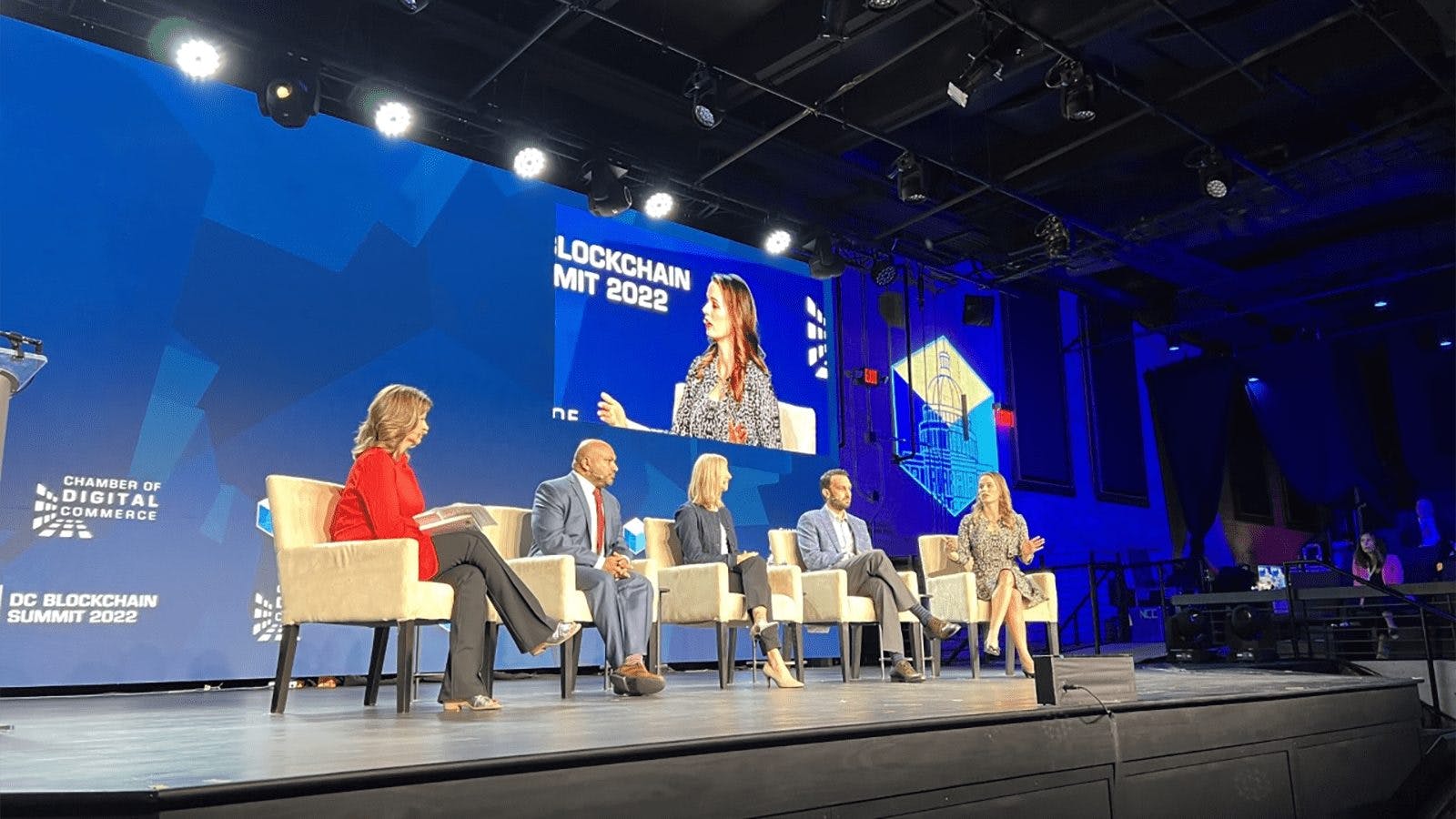“The [SEC] is the Number One Blocker,” says Chamber of Digital Commerce Founder
The recent executive order, while promising in tone, did not provide tangible policy that many institutions and investors are awaiting

Source: Digital Chamber of Commerce
- Crypto executives agree that government agencies need better defined roles when it comes to digital asset regulation
- The SEC needs to define what a digital asset security is, Chamber of Digital Commerce head said
As the digital asset industry continues to evaluate the potential impact of President Biden’s executive order, one digital asset advocacy group is calling for jurisdictional clarity.
“It’s very clear that the US Securities and Exchange Commission is the number one blocker to this industry having economic progress and springing an economic boom in this country that we haven’t seen in decades,” Perianne Boring, founder and CEO of the Chamber of Digital Commerce, said at the DC Blockchain Summit in Washington on Tuesday.
The SEC needs to define what a digital asset security is, for starters, Boring said. The industry cannot continue to innovate without clear guidelines, and investors need safe options for crypto exposure, including a spot bitcoin ETF.
“How do we have futures ETFs but not a spot ETF?” Boring said. “It doesn’t make sense, and it’s often harming investors in an incredible way.”
The recent executive order, while somewhat promising in tone, did not provide tangible policy that many institutions and investors are awaiting, Kathy Kraninger, vice president of regulatory affairs at Solidus Labs, said.
“The notion that we’re going to solve everything for blockchain or for digital assets through this executive order…that’s a lot of expectation that will be disappointed,” Kraninger said.
The executive order, which Kraninger referred to as more of a fact finding mission, lists several new agencies, like the Environmental Protection Agency, that have not been involved in the digital asset space recently, adding to the jurisdictional confusion.
“I’m not saying that they’re not going to be useful, but education is an ongoing moving target in the blockchain space,” Sulolit Mukherjee, vice president and global head of tax at Binance, said. “I empathize with the challenges of the folks in these agencies who now have to sort of go out there learn this technology, keep up with the tremendously fast pace of innovation and then come up with recommendations.”
There are current guidelines that asset issuers and exchanges have to follow today, Mukherjee pointed out. Binance.US, as a regulated digital asset exchange, has to follow reporting and licensing requirements, he said. To call crypto an “unregulated industry” is a misrepresentation, Boring agreed.
“It’s a long game, I think it’s going to take a while before we get full clarity of what the regulatory framework is going to look like,” Mukherjee said. “The priority now…is responsible innovation.”
Get the news in your inbox. Explore Blockworks newsletters:
- The Breakdown: Decoding crypto and the markets. Daily.
- 0xResearch: Alpha in your inbox. Think like an analyst.






